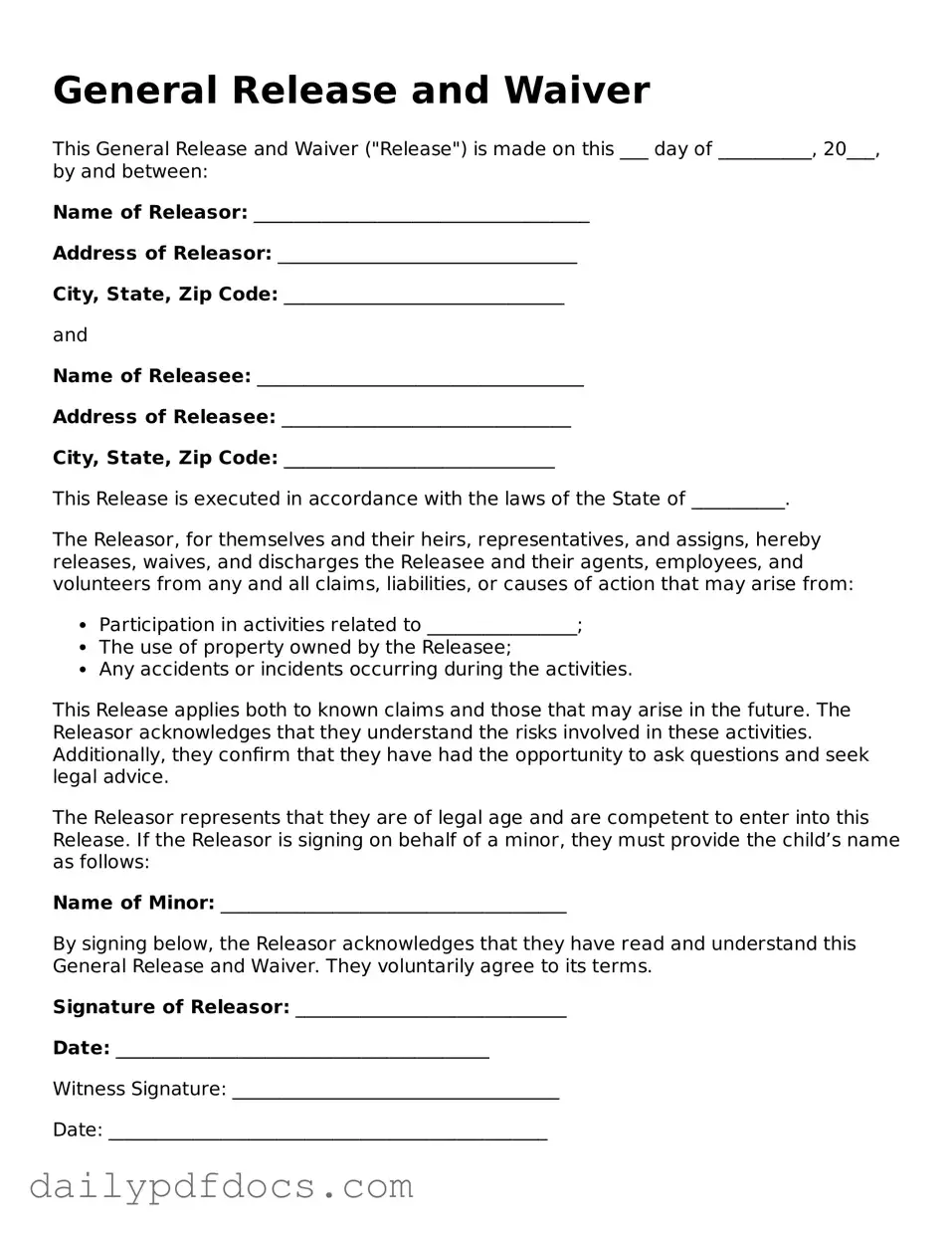General Release and Waiver
This General Release and Waiver ("Release") is made on this ___ day of __________, 20___, by and between:
Name of Releasor: ____________________________________
Address of Releasor: ________________________________
City, State, Zip Code: ______________________________
and
Name of Releasee: ___________________________________
Address of Releasee: _______________________________
City, State, Zip Code: _____________________________
This Release is executed in accordance with the laws of the State of __________.
The Releasor, for themselves and their heirs, representatives, and assigns, hereby releases, waives, and discharges the Releasee and their agents, employees, and volunteers from any and all claims, liabilities, or causes of action that may arise from:
- Participation in activities related to ________________;
- The use of property owned by the Releasee;
- Any accidents or incidents occurring during the activities.
This Release applies both to known claims and those that may arise in the future. The Releasor acknowledges that they understand the risks involved in these activities. Additionally, they confirm that they have had the opportunity to ask questions and seek legal advice.
The Releasor represents that they are of legal age and are competent to enter into this Release. If the Releasor is signing on behalf of a minor, they must provide the child’s name as follows:
Name of Minor: _____________________________________
By signing below, the Releasor acknowledges that they have read and understand this General Release and Waiver. They voluntarily agree to its terms.
Signature of Releasor: _____________________________
Date: ________________________________________
Witness Signature: ___________________________________
Date: _______________________________________________
